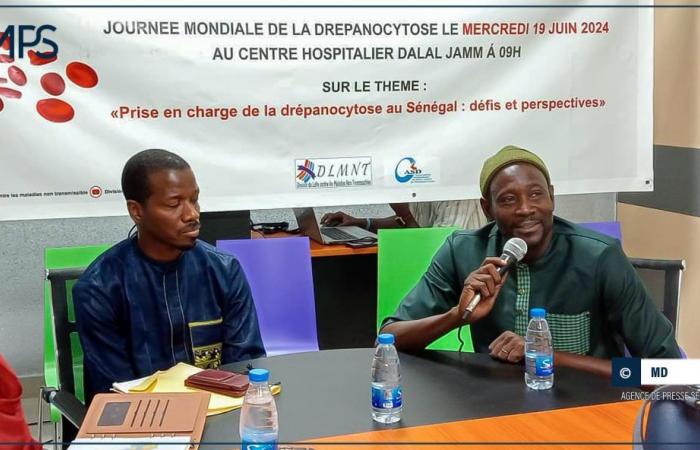
Dakar, June 19 (APS) – The ambulatory care unit for children and adolescents with sickle cell disease at the Albert Royer children’s hospital in Fann, in Dakar, is currently following 4,900 patients in this category, we learned on Wednesday. Hindu professor Dème Ly, responsible for this service.
“Today, at the outpatient care unit for children and adolescents with sickle cell disease at the Albert Royer children’s hospital in Fann, a total of 4,900 children are being followed,” declared the pediatrician.
She took part in Dakar in the commemoration of World Sickle Cell Day, focused this year on the theme “Management of sickle cell disease in Senegal: challenges and perspectives”.
According to the World Health Organization, nearly 5% of the world’s population carries a gene responsible for a hemoglobin abnormality.
The majority of people affected live in black Africa where the prevalence rate varies between 10 and 40%, specifies the WHO.
In Senegal, one in ten people carry the sickle cell gene. They are called carriers of the sickle cell trait (AS), and from their union are born children carrying homozygous sickle cell disease (SS).
Official statistics indicate that 2,500 children are born with sickle cell disease each year in Senegal.
According to Doctor Malick Anne, head of the division for the fight against non-communicable diseases, who came to deliver the message from the responsible minister, “currently, nearly 5,000 children and 3,000 adults with sickle cell disease are being monitored in the services. [spécialisés]”.
“This means that the vast majority of patients do not benefit from adequate care, and that sickle cell disease contributes significantly to infant and child mortality, the reduction of which is one of the major sustainable development goals (SDGs) “horizon 2030”, commented Doctor Anne.
Also, faced with this situation, the Ministry of Health and Social Action has decided to include the fight against sickle cell disease among its priorities.
“The State of Senegal, in collaboration with experts, health providers, partners and civil society, is implementing effective strategies to reduce morbidity and mortality linked to this debilitating pathology,” underlined Malick Anne.
“Efforts are being made, but the fact remains that challenges remain,” noted Mr. Anne, while assuring the commitment of his department to do what is necessary to improve and strengthen disease prevention.
According to the Ministry of Health and Social Action, the theme of this day, namely “Management of sickle cell disease in Senegal: challenges and perspectives”, highlights the current challenges that Senegal is faced with in terms of of this disease.
This theme at the same time highlights the opportunities and prospects for improving the situation through targeted initiatives and appropriate interventions, indicates the authority.
Regarding the fight against sickle cell disease, it involves several actors, each of whom “has a role to play, whether individuals, the State, experts, technical and financial partners or the civil society”, indicated Doctor Anne while delivering the message from Minister Ibrahima Sy.
“It will take combined efforts and a concerted approach to achieveoptimal load,” he concluded.
NSS/BK/ADL





